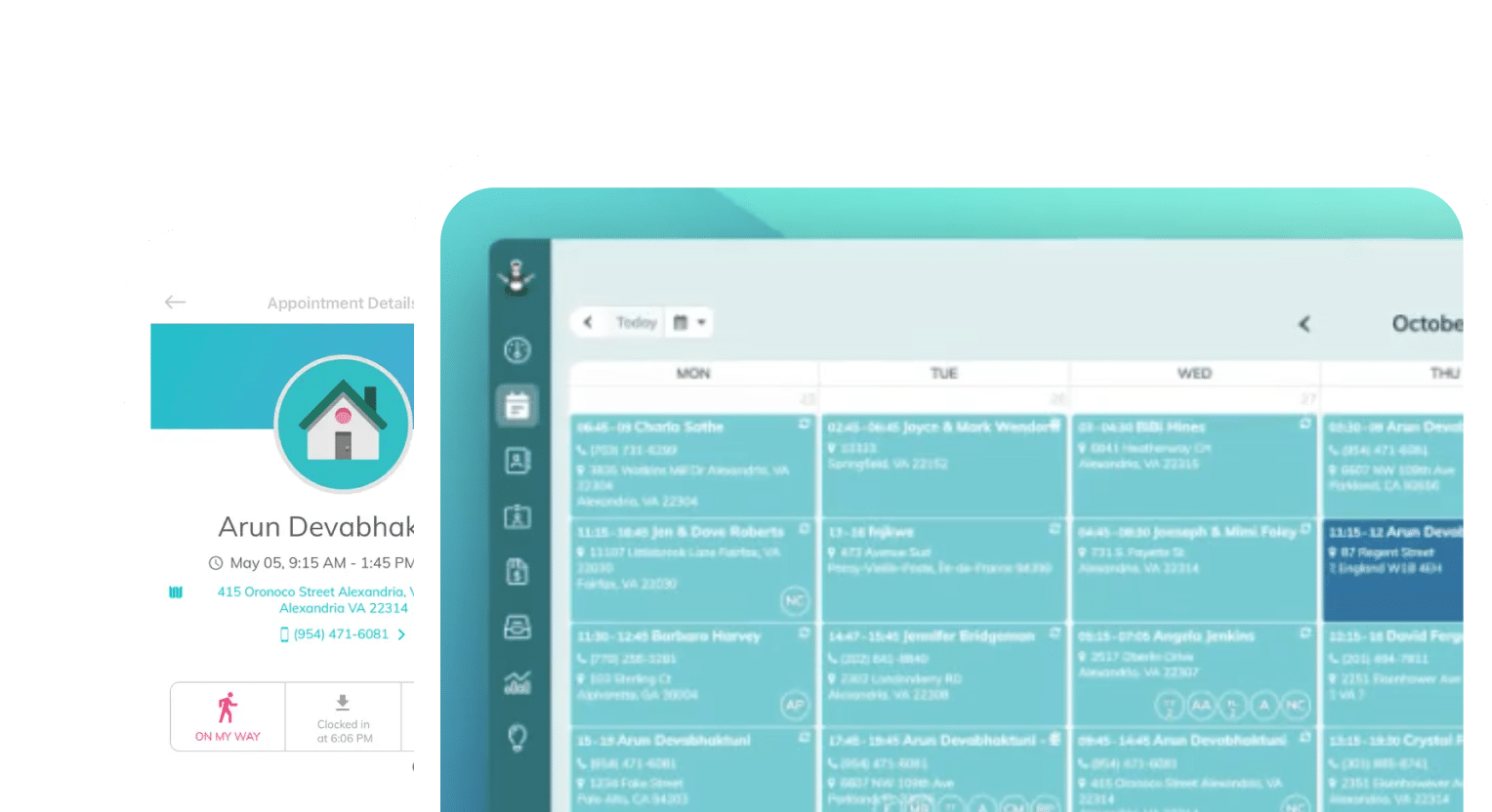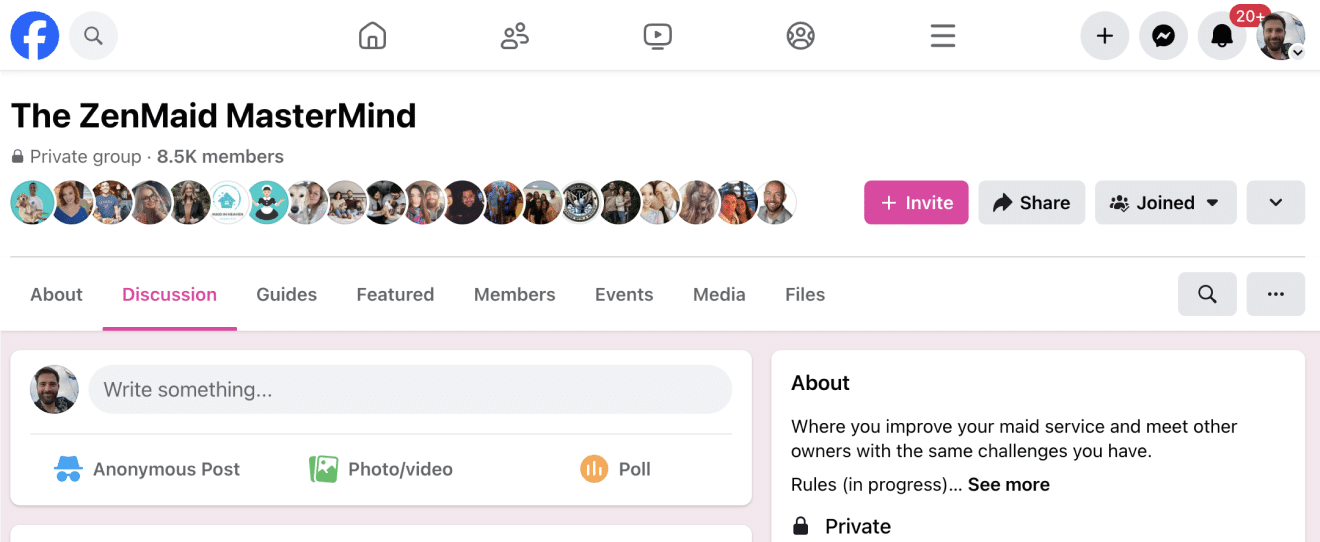Table of contents
6 Productivity Tips To Help You Reclaim Your Time as a Maid Service Owner
As a maid service owner, your time is valuable. There are tons of systems out there that show you how to streamline your business operations, increase your staff’s productivity, and systematize your business. But how can you, as an owner, optimize your time while still getting your most important tasks done?
In this post, you’ll learn how to streamline your days as an owner and set your maid service up to run like a well-oiled machine using high-level productivity concepts.
Understand these three time management systems
There are a few basic time management systems that you can incorporate into your routine for your cleaning business to help you get things done more efficiently.
1 – The 80/20 Principle
This rule implies that 80% of your results come from 20% of your effort. You can apply this principle to how you spend your personal time, as well as the decisions you make for your business.
For example, for a maid service business, you might use the 80/20 rule to choose the marketing strategy that is going to reap you the most leads and clients with the least effort. So instead of splitting your time equally among 3 or 4 different platforms, focus on the platform that is reaping you the most results.
See how you can apply it to all other areas of your life too – you’ll be amazed how well it fits!
2 – Parkinson’s Law
Parkinson’s Law suggests that your work takes only as much time as the time you make available for it.
For example, if you give yourself 4 hours to complete a task, you are more likely to stretch that task out across four hours. If you only give yourself 1 hour to complete a job, you’ll likely be able to complete that task in the hour you allotted for it.
This principle can help you get work done in less time than you previously thought was possible.
3 – Essentialism
Essentialism is about identifying your core goals in your life, business, and relationships and finding ways to maximize your time and energy around those things. This principle was made popular by the book Essentialism: The Disciplined Pursuit of Less by Greg McKeown. It’s not about getting more done, but about choosing to use your time wisely and work only on the most important things.
Now that you understand some of the core principles that will help you manage your time, we’re going to go over a simple way to put these principles into practice.
Implement the ABCDE method of prioritization
Once you understand the main productivity principles, you still need to take actionable steps to incorporate them into your routine. Chris recommends using the ABCDE method of prioritization when choosing the things you will spend the most time on.
Start by getting a sheet of paper and writing down every task that you can think of that you might need to do.
Take each item on the list and assign it a value of A, B, C, D, or E using these criteria:
- ‘A’ Tasks are mission-critical and time-sensitive. Example: You are overbooked and need to hire a new cleaning team quickly.
- ‘B’ Tasks are still important but are not as time-sensitive. Example: You want to readjust your quarterly marketing budget. This is an important task but doesn’t have a set deadline.
- ‘C’ Tasks are things that need to be done but won’t significantly affect your day-to-day operations. Example: Following up about a potential partnership.
- ‘D’ Tasks are not crucial or time-sensitive. They tend to be things you want to do but are not as essential to business growth. Example: Replying to a bad review or trying out a new live chat app for your website.
- ‘E’ Tasks don’t need to be done with any urgency and are usually not a great use of your time. These are tasks that you should delegate to someone else so that you can free up your headspace to focus on bigger things.
Focus on batching
Incorporating batching into your workday will save you tons of time and let you use your time as efficiently as possible. Batching is an excellent way of tackling all of your smaller tasks, such as your C, D, and E tasks, all at once to save time throughout the day.
When you have all of your tasks labeled as A, B, C, D, or E, give yourself a designated amount of time per day to work on the C, D, E tasks and don’t work on them at any other point in the day.
Rather than doing a few of them here and there throughout the day, batching will let you do them all at once and prevent you from spending unnecessary time on less important work. It’ll also reduce the number of distractions throughout your workday and give you more uninterrupted flow time doing more meaningful work.
We recommend choosing 2-3 periods of the day to focus only on those tasks.
Here’s an example of how Chris’s team batches C, D, and E tasks for Think Maids.
From 8:00-9:00 am, is time dedicated to:
- Responding to emails, texts, and voicemail
- Calling customers for feedback
- Submitting quotes and messages
From 5:00-6:00 pm, he uses this time to
- Schedule teams for the next day
- Charge cards
- Renew ads
- Reply to non-urgent messages
In between these times, their days are free for all the A-B tasks without distraction or as many interruptions.
Create a three-part to-do list
We understand that it’s not always as simple as creating a to-do list and classifying each item. Business owners continuously have new projects on the horizon, big picture things they want to accomplish, and new things are popping up every day.
For this reason, it’s smart to have different parts to your to-do list to keep you organized on a day-to-day while also keeping an eye on the big picture.
Chris recommends implementing a three-part to-do system using a “do list,” a “batch list,” and a “watch list.”
Do List
This is your current to-do list that outlines out everything you have to do today or this week. This is what you refer to throughout your day to ensure you’re staying on track with your daily and weekly tasks.
Batch List
As we mentioned above, your batch list is a list of smaller tasks that you can do all at once. The key to a batch list is not to include those tasks on your do list.
Don’t look at the batch list until it’s the specific time you’ve allocated for these tasks. Otherwise, you run the risk of getting distracted and working on them throughout the day.
Watch List
This is a list of tasks coming up in the future or projects that you want to work on but haven’t started yet. Putting these items on your main ‘Do’ list can be overwhelming when seeing them among all of the other tasks that are urgent at the moment.
Instead, put them on a separate list, and they dedicate time every week to assessing them and working on the next steps until they become a part of your ‘Do’ list.
Conduct a weekly review
Pick one night a week to do a thorough review of all of your tasks. During this time, sit down with your lists and organize them. Mark off things that you’ve finished, and decide what tasks you need to work on in the upcoming week. This is also a great time to move items from your ‘Watch’ list to your ‘Do’ list if you’re executing a new project or notice you have some free time.
The key is to make sure that your lists are all up to date. Then organize all of your to-do’s using the ABCDE method, choose which tasks you’ll batch and the periods you’ll dedicate to them.
Keep it simple
When implementing new productivity or organizational systems, it can feel overwhelming at first. But if you can commit to using a system like the one in this post for at least four weeks, you’ll look back and wonder how you got anything done before.
Remember to keep it simple and focus on the strategies that feel the most natural to you that generate the best results. Everyone’s to-do lists will look different, so it’s important to check in with yourself and regularly ask if your current system is still working for you.
Systems like this can also be great at helping your team stay more organized and productive. Once you’ve figured out a system that works well for you, do a trial run with your team and encourage them to find ways to be more organized and productive in their own lives as well as with their roles in your cleaning business.
If you want to learn more about integrating the systems we talked about in this article into your life as a maid service owner, check out Chris’ full presentation from the 2020 Maid Summit. Watch the full talk to learn how you can get 25% off Chris’ Local Business MBA program.
About the presenter
This post is based on a presentation from the 2020 Maid Summit given by Chris Schwab, CEO and Co-Founder of Inova Local and Think Maids. His systems for automation and delegation, have helped business owners – including Chris himself – spend as little as 10 minutes per day as an owner of their business while simultaneously help them grow to six-figures and beyond.
This talk first aired at the 2020 Maid Service Success Summit.
The Maid Summit is an annual online event that brings together the most successful leaders in the cleaning industry, like Debbie Sardone, Angela Brown, Courtney Wisely, Amy Caris, Chris Schwab and more. Get free access to masterclasses and workshops that will help you to grow, scale and automate your cleaning business so you can get more leads and create more profit. Make sure you’re on our email list to find out how to get free tickets to the next event.
If you enjoyed this article, you will probably also like:
- Stop Overpaying: How to Save $10K+ a Year in Your Cleaning Business
- How One Cleaning Tech Employee Becomes Irreplaceable
- What I Wish I Had in Place *Before* My First Nightmare Client
- The Divorced, Broke, and Fearless Journey to Six-Figure Vacation Rental Success
- How a 20-Year Cleaning Business *Drastically* Increased Revenue by Ditching Pen and Paper

 Frustrated with your scheduling? Try the easiest-to-use calendar app, made by and for maid service owners.
Frustrated with your scheduling? Try the easiest-to-use calendar app, made by and for maid service owners.










